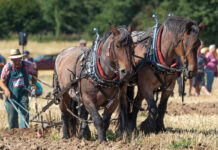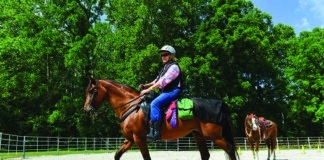If you’re new to horses, you’re probably feeling a little overwhelmed by the complexities of breeds, tack, riding styles, health care, and more. The subject of equine markings is one place the newcomer will find many new terms. And while horses can display a wide variety of markings on their bodies, we’re going to look specifically at the white markings on horses’ legs and faces and help you learn to identify them by name.
In this chart, we show each face marking separately, but this doesn’t mean they are always seen alone. Many horses have combinations of face markings, such as a star and a snip, or a star and a stripe. And then there are horses who have markings that seem to defy being placed in any category—you’ll have to make your own judgement on what to call it!
Horse Face Markings
Face markings are identified according to their shape and location on the horse’s face.
Snip:
a small white marking on the muzzle, not connected to any other markings.
Stripe:
a narrow band of white running up a horse’s face from the nose to between the eyes.
Star:
any white marking on the forehead. It could be tiny, it could be large, or it could be an average size, like the one shown.
Blaze:
a white marking wider than a stripe and thinner than a bald face, not including the horse’s eyes.
Bald Face:
the most dramatic face marking, covering most of the face, possibly covering the eyes.
Horse Leg Markings
Leg markings are identified by how high they extend up a horse’s leg.
Coronet:
a thin band of white above a horse’s hoof.
Pastern:
includes the pastern but doesn’t cover the fetlock
Sock (sometimes called an anklet):
includes the fetlock joint
Half-stocking (or half-cannon):
continues partway up the horse’s cannon bone.
Stocking:
covers the entire lower leg and sometimes goes past the knee
This article about horse face and leg markings is a web exclusive for Horse Illustrated magazine, originally published November 2015. Click here to subscribe!








Thanks for some more useful articles.
great info
Love the bald face….good information to know.
[…] with body color, horses often have different white markings on their face. There are a variety of markings, but they fall within several […]